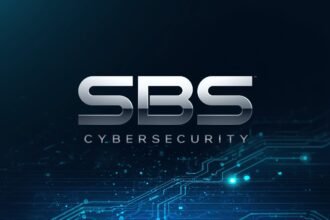The digital world runs on data. Every second, countless packets of information travel across networks, carrying everything from simple web requests to sensitive corporate secrets. While this traffic is mostly invisible, special tools can intercept and analyze it. In cybersecurity, these tools are called sniffers. When wielded by ethical hackers, they are essential for strengthening an organization’s digital defenses.
This article will explore the role of sniffers in ethical hacking. We’ll cover what they are, how they work, and how professionals use them to find and fix network vulnerabilities. Understanding these tools reveals how proactive security testing helps protect us from cyber threats.
What is a Sniffer?
A sniffer, also known as a packet analyzer or network protocol analyzer, is a tool that intercepts and logs traffic on a network. It can be a piece of software or a dedicated hardware device. Think of it as a listening post for your network, capturing the data packets that flow between computers, servers, and the internet.
Every packet contains vital details, such as the sender and receiver IP addresses, the protocol used (like HTTP or FTP), and the actual data being sent. A sniffer gathers these packets and organizes them into a human-readable format. This allows a security professional to see exactly what is happening on the network in real-time. In ethical hacking, the goal is not to spy but to diagnose network issues and find security gaps.
Sniffers in Ethical Hacking
Ethical hackers, often called penetration testers, use sniffers with explicit permission to find weaknesses before malicious hackers can exploit them. This proactive approach is a critical part of a modern cybersecurity strategy. The main objective is to answer important questions about a network’s security.
- Is sensitive data, like passwords or credit card numbers, being sent in plain text?
- Are there unauthorized devices or services operating on the network?
- Can an attacker intercept user credentials during a login process?
- Are firewalls or routers configured incorrectly, allowing unintended access?
By sniffing network traffic, an ethical hacker can spot vulnerabilities that might otherwise go unnoticed. For example, they could find that an internal application sends user passwords without encryption. This discovery enables the organization to patch the vulnerability before an attacker can exploit it, preventing a potential data breach.
The Critical Role of Authorization
It is essential to understand that using a sniffer on any network without permission is illegal and unethical. Intercepting data without consent is a serious invasion of privacy and carries severe legal consequences. Ethical hackers operate under a strict code of conduct and always get written authorization from an organization before starting any tests. This clear ethical and legal boundary is what separates them from criminals.
How Do Sniffers Work?
Sniffers can operate in two different modes, depending on the network’s hardware.
Passive Sniffing
On older networks that use hubs, all traffic is broadcasted to every connected device. In this environment, a sniffer can operate passively. By placing its network interface card (NIC) into “promiscuous mode,” it can capture all packets on the network, not just the ones addressed to it. This method is stealthy because it doesn’t generate any extra network traffic.
Active Sniffing
Most modern networks use switches, which are smarter than hubs. Switches send traffic only to the intended recipient device, making passive sniffing ineffective. To capture traffic on a switched network, an ethical hacker must use active sniffing techniques. This involves injecting packets into the network to redirect the flow of data. A common method is ARP spoofing, where the hacker tricks devices into sending their traffic to the hacker’s machine by forging network messages. Active sniffing is more “noisy” and can be detected, but it’s often necessary on today’s networks.
Popular Sniffing Tools for Ethical Hackers
A variety of powerful sniffing tools are available to cybersecurity professionals.
1. Wireshark
Wireshark is the most famous and widely used network protocol analyzer. It’s open-source, features a graphical user interface (GUI), and is incredibly powerful. Ethical hackers use it to inspect hundreds of protocols, capture live traffic, and apply filters to isolate specific data streams. It is an indispensable tool for identifying unencrypted data and analyzing suspicious activity.
2. tcpdump
For those who prefer a command-line interface, tcpdump is a classic choice. It is lightweight, fast, and comes pre-installed on most Linux and macOS systems. Ethical hackers often use tcpdump on servers where a GUI is unavailable. Its ability to be scripted makes it perfect for automated traffic analysis and quick diagnostics.
3. Ettercap
Ettercap is a comprehensive suite designed for testing a network’s vulnerability to man-in-the-middle (MitM) attacks. Ethical hackers use it in controlled settings to demonstrate how an attacker could intercept and even alter data in transit. It excels at active sniffing techniques like ARP spoofing and can identify passwords sent over insecure protocols like FTP and HTTP.
How to Protect Your Network From Malicious Sniffing
While ethical hackers use sniffers to improve security, criminals use them to steal information. Organizations can take several steps to defend against malicious sniffing.
- Encrypt All Traffic: The best defense is strong encryption. When data is encrypted with protocols like TLS (for HTTPS), SSH, and VPNs, a sniffer can capture the packets, but the content will be unreadable.
- Use a Switched Network: Switches limit the exposure of traffic by directing it only to the correct recipient, which defeats passive sniffing.
- Implement an Intrusion Detection System (IDS): An IDS can detect signs of sniffing, such as a network card entering promiscuous mode or the forged packets used in an ARP spoofing attack.
- Monitor Network Behavior: Regularly check for unusual traffic patterns or unauthorized devices. Establishing a baseline of normal network activity helps spot anomalies that could indicate an attack.
By layering these defensive measures, you can significantly reduce the risk of a malicious sniffer compromising your network and stealing valuable data.



